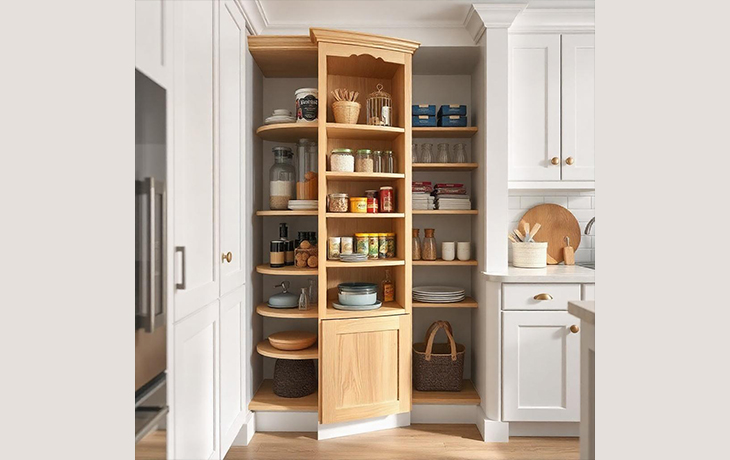
Top Interior Design Trends of the Year: What’s In and What’s Out
The world of interior design is constantly evolving, with new trends emerging and old ones fading away. Staying updated with the latest styles can help you create spaces that feel modern, functional, and stylish. In this guide, we’ll explore the top interior design trends of the year—what’s in, what’s out, and how you can incorporate these ideas into your home or office.
1. What’s In: Natural Elements and Organic Materials
• Why It’s Trending: Homeowners are prioritizing sustainability and natural aesthetics.
• Features:
o Furniture made from wood, bamboo, and rattan.
o Stone accents for countertops, flooring, and decor.
o Indoor plants for a fresh, green touch.
How to Incorporate:
• Use wooden furniture with natural finishes.
• Add potted plants or a vertical garden to your living room.
• Replace synthetic rugs with jute or wool for an eco-friendly vibe.
What’s Out: Overly Synthetic Materials
• Plastics and glossy laminate finishes are being replaced by more natural, matte options
2.What’s In: Bold Accent Walls
• Why It’s Trending: Accent walls add personality and create a focal point in the room.
• Features:
o Vibrant colors like emerald green, mustard yellow, and terracotta.
o Textured finishes like Venetian plaster, limewash, or 3D panels. o Wallpapers with bold patterns or floral designs. How to Incorporate:
• Choose a single wall in the living or dining area for a bold paint color or wallpaper.
• Pair bright walls with neutral furniture for balance.
What’s Out: Monotone All-White Interiors
• Entirely white spaces feel outdated; people are opting for splashes of color to add character.
3.What’s In: Multi-Functional Spaces
• Why It’s Trending: The shift to remote work and hybrid living has increased the need for versatile spaces.
• Features:
o Home offices that double as guest rooms.
o Modular furniture like foldable desks and Murphy beds.
o Open layouts with defined zones for work, relaxation, and dining.
How to Incorporate:
• Invest in modular furniture to save space.
• Use dividers or rugs to define different zones within an open space.
What’s Out: Rigid, Single-Use Spaces
• Rooms designed for just one function no longer meet the demands of modern living.
4.What’s In: Biophilic Design
• Why It’s Trending: Connecting with nature is known to improve mental health and well-being.
• Features:
o Large windows to maximize natural light.
o Incorporating natural elements like stone, wood, and greenery. o Neutral, earthy tones for a calming effect. How to Incorporate:
• Replace heavy curtains with sheer fabrics to let in more sunlight.
• Add an indoor water feature or wall-mounted planters. What’s Out: Overly Minimalist, Sterile Designs • Designs
5. What’s In: Statement Lighting
When deciding between custom and ready-made furniture, consider these factors:
1. Budget: o Custom furniture is a better investment for long-term quality, while ready-made options are ideal for tighter budgets.
2. Space: o For awkward layouts or small spaces, custom furniture ensures a perfect fit.
3. Timeline: o If you need furniture quickly, ready-made is the way to go.
4. Style Preferences: o Custom furniture allows for personalization, while ready-made offers a range of trendy designs.
5. Durability: o If you’re looking for pieces that last, custom furniture with high-quality materials is worth the investment.
6. What’s In: Earthy and Warm Color Palettes
• Why It’s Trending: Lighting is no longer just functional; it’s a statement piece.
• Features:
o Oversized pendant lights in the kitchen or dining area.
o Chandeliers with geometric or sculptural designs.
o Smart lighting with dimmable and color-changing options.
How to Incorporate:
• Replace standard ceiling lights with bold fixtures.
• Use floor lamps or wall sconces to highlight specific areas.
What’s Out: Generic Recessed Lighting
• Plain, unremarkable lighting is making way for designs that add drama and elegance.
7. What’s In: Sustainable and Recycled Materials
• Why It’s Trending: People are embracing colors that evoke warmth and comfort.
• Features:
o Shades like terracotta, olive green, beige, and burnt orange.
o Mixing warm tones with neutral backdrops for balance. How to Incorporate:
• Paint an accent wall in a warm tone.
• Use throw pillows, rugs, or curtains in earthy shades to complement neutral furniture.
What’s Out: Cool Gray Overload
• Gray-heavy interiors are being swapped for warmer, more inviting palettes.
8. What’s In: Maximalism with a Purpose
• Why It’s Trending: Eco-conscious living is becoming a priority for many homeowners.
• Features:
o Recycled glass countertops.
o Repurposed wood for furniture and flooring.
o Vintage or upcycled decor pieces. How to Incorporate:
• Shop for pre-owned or vintage furniture.
• Choose eco-friendly building materials for renovations.
What’s Out: Fast Furniture and Disposable Decor
• Mass-produced, low-quality items are losing favor to durable, sustainable alternatives.
9. What’s In: Smart Home Features
• Why It’s Trending: People are moving away from minimalism, opting for more expressive interiors.
• Features:
o Bold patterns, textures, and vibrant colors.
o Layered decor with personal touches and statement pieces.
o Gallery walls and curated shelves. How to Incorporate:
• Mix patterns and textures in furniture and soft furnishings.
• Display personal collectibles and art pieces.
What’s Out: Extreme Minimalism
• Bare, empty spaces are being replaced by rooms filled with personality and character.
10. How to Incorporate:
• Why It’s Trending: Technology continues to enhance comfort and convenience in modern homes.
• Features:
o Voice-controlled lighting, curtains, and appliances.
o Smart thermostats and security systems.
o Hidden charging stations and integrated speakers.
What’s Out: Traditional Fixtures Without Smart Options
• Smart technology is becoming the standard in modern interiors.




